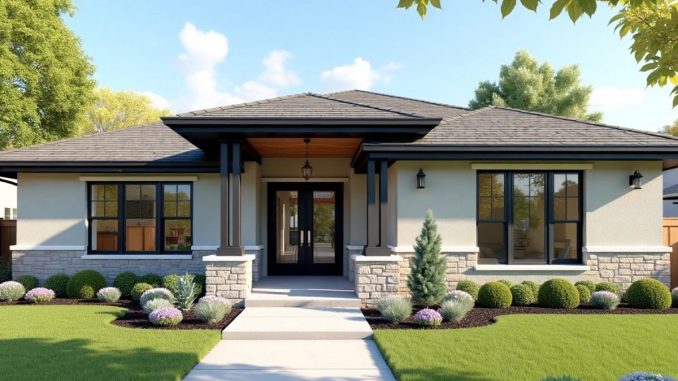
Aging in place is becoming a significant trend in the home building industry, driven by the desire of seniors to remain in their homes and avoid the high costs of nursing homes and assisted living facilities. This shift presents a lucrative opportunity for builders and contractors to cater to the needs of an aging population.
Key Takeaways
- Aging in place is a growing trend among seniors.
- Home builders and contractors can capitalize on this trend by offering specialized services.
- Common home modifications include grab bars, wheelchair ramps, and ground-floor bathrooms.
- Financial incentives for aging in place include lower costs compared to nursing homes.
The Growing Demand for Aging in Place
As the population ages, more seniors are expressing a desire to stay in their homes rather than move to nursing homes or assisted living facilities. This preference is not only driven by the comfort of familiar surroundings but also by significant financial incentives. The cost of nursing home care can reach up to $13,000 per month in major cities, while assisted living facilities average around $5,500 to $7,000 per month. In contrast, in-home care typically ranges from $3,500 to $6,000 per month.
Common Home Modifications
To accommodate the needs of aging residents, several home modifications are becoming increasingly popular:
- Grab Bars and Wheelchair Ramps: Essential for safety and mobility.
- Widened Entryways: To accommodate wheelchairs and walkers.
- Ground-Floor Bathrooms: To eliminate the need for stairs.
- Raised Electrical Outlets and Lowered Switches: For easier access.
- Softer Flooring Options: Such as bamboo or cork to cushion falls.
- Pull-Out Shelves and Lowered Countertops: To make kitchen work surfaces more accessible.
Major Renovations
In addition to smaller modifications, some homes may require more extensive renovations to ensure safety and accessibility:
- First-Floor Master Bedrooms: To avoid the need for stairs.
- Lipless Showers: To prevent tripping hazards.
- Wheelchair Lifts: For multi-story homes.
- Wheelchair Ramps: Leading to the front entrance.
Builders Adapting to the Trend
Home builders are increasingly recognizing the demand for age-in-place features. Some are even designing homes with future modifications in mind, such as stacking closets on different floors to allow for a future elevator installation. The National Association of Home Builders (NAHB) offers certification for builders as Aging in Place Specialists, ensuring they are equipped to meet these specific needs.
Financial Considerations
While the cost of these modifications can be significant, there are financial options available. Seniors with substantial home equity might consider a reverse mortgage, which allows them to access funds without monthly repayments until the home is sold. However, it’s crucial to understand the terms and conditions before opting for this route.
Aging in place is not just a trend but a growing necessity as the population ages. For home builders and contractors, this presents a substantial business opportunity to provide specialized services that cater to the needs of seniors, ensuring they can live comfortably and safely in their own homes for as long as possible.

